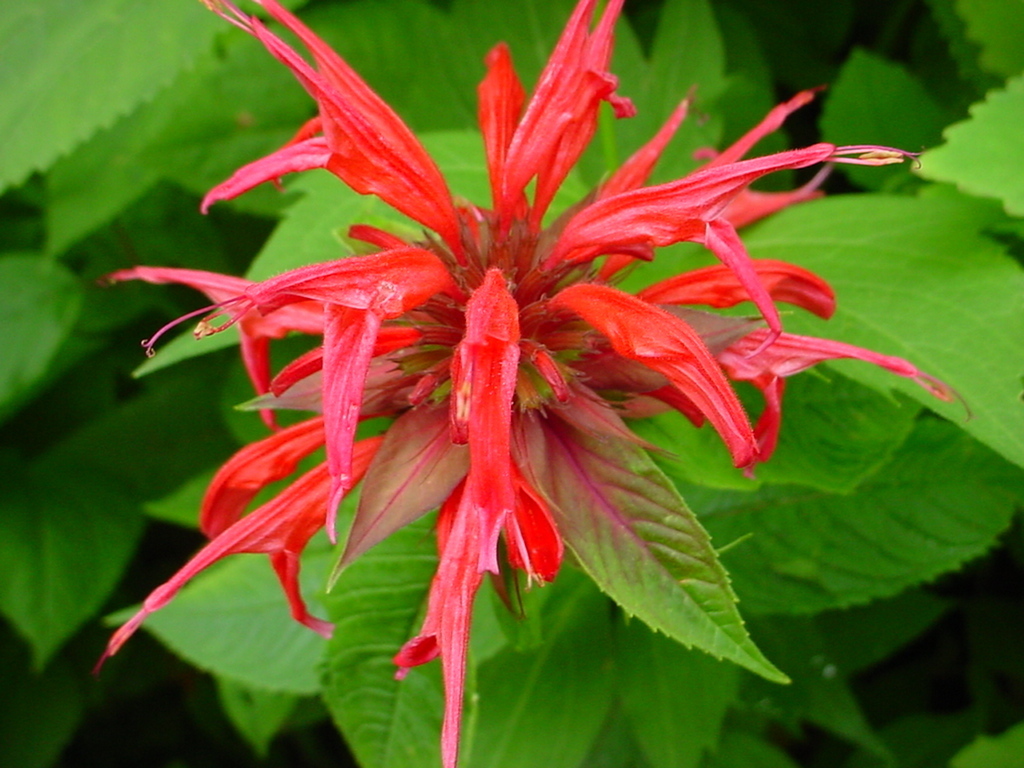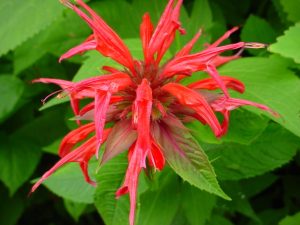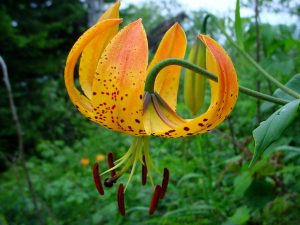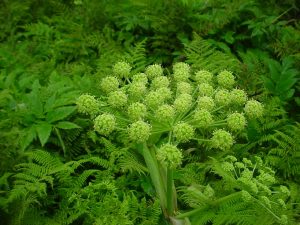

As we advance in the summer season, it is only fitting that we examine some summer wildflowers. In this report we will check out crimson beebalm, Turk’s cap lily, and filmy angelica.
Crimson beebalm is recognized as having one of the most brilliant scarlet red blooms among wildflowers found in the Great Smoky Mountains. The plant can be from two to three feet tall, and the blooms appear in July and August. Because the floral tubes are long, it is difficult for most insects to reach the nectar. However, the flowers are popular with ruby-throated hummingbirds, whose tongues are capable of slurping up the nectar at a rate of 18 licks per second.
For you history buffs, after the Boston Tea Party in 1773 there was a shortage of tea imported from England. Citizens used the leaves of crimson beebalm to make tea instead. This idea was likely adopted from Native Americans who used tea from beebalm to treat fevers and chills. Additionally, it was reported that the tea was capable of cleansing blood of impurities.

The Turk’s cap lily has an orange (some say red-orange) bloom that appears in July and August. The plant grows from six to ten feet tall, and the blooms droop towards the ground. One stalk can have from ten to forty blooms on it. The blooms have dark brown antlers which can be more than 0.6 inches long. The plant gets its name because of the resemblance the blooms have to caps of Turkish men that were worn in ancient times.
The filmy angelica bloom is normally a yellowish-green color, and the blooms appear from July to September. The plant can grow from three to five feet tall. The blooms are very popular with bees, and it is reported that the nectar is intoxicating to bees that feed on it. When passing by the blooms one must be careful not to brush against them as a sting from a hidden bee may follow! On Mount Le Conte I have seen bumble bees on the blooms acting as if they are in a drunken stupor. Some of the bees appear to be sleeping.
All three of these wildflowers are commonly seen on Mount Le Conte and along the Appalachian Trail in the Smokies. I have seen beebalm on a number of trails in the lower elevations such as Little River and Middle Prong. The Turk’s cap lily can also be found on Little River Trail.

For those that would like to put beebalm in their gardens, I have found them in nurseries that sell wildflowers. Some nursery catalogs call the plants monarchs.
Hopefully many of you can make it to LeConte Lodge this summer to enjoy the beauty of all three of these spectacular wildflowers. They are usually blooming around the same time as a number of other wildflowers such as monkshood, wild golden glow, liner leaf gentian, mountain Saint John’s wort, and grass of Parnassus. One neat aspect of wildflowering in Great Smoky Mountains National Park is the fact that we are not limited to the spring months to seek, find, identify, and enjoy wildflowers.
Subscribe to get the latest posts sent to your email.
The Great Smokies Welcome Center is located on U.S. 321 in Townsend, TN, 2 miles from the west entrance to Great Smoky Mountains National Park. Visitors can get information about things to see and do in and around the national park and shop from a wide selection of books, gifts, and other Smokies merchandise. Daily, weekly, and annual parking tags for the national park are also available.